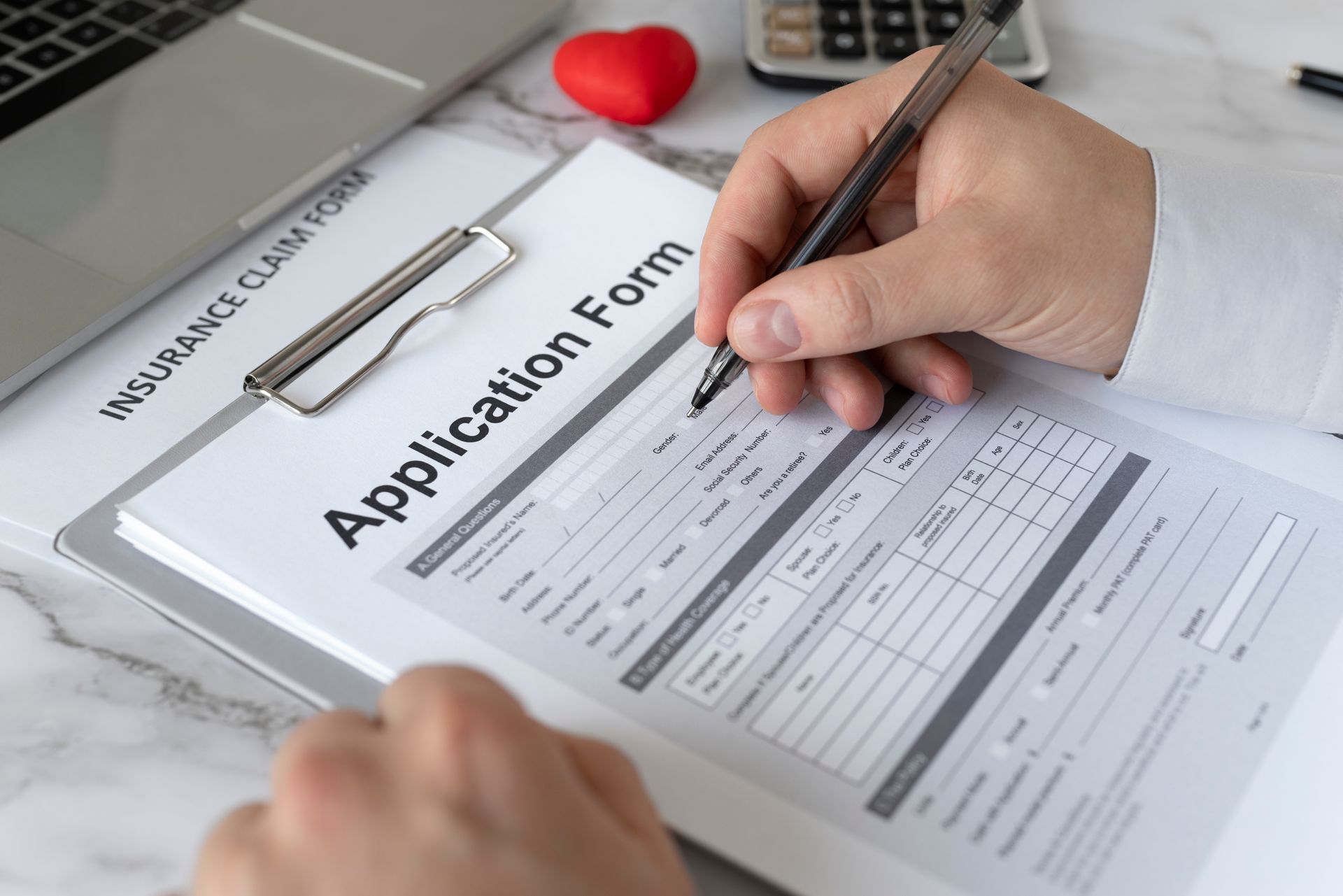Statutory Declaration of Common-law Union (IMM 5409) Instruction Guide
The best way for applicants in a common-law relationship to prove their relationship to Immigration, Refugees and Citizenship Canada (IRCC) is to submit the Statutory Declaration of Common-Law Union along with supporting documents.

The form number on the IRCC website is called the IMM 5409. It’s always important to use the most recent version of any immigration form when submitting your application. The date can be found in the bottom left corner of every immigration form. The most recent version of the IMM 5409 is January 2023.
Criteria for Being Considered Common-law
For immigration purposes, three criteria must be met to create a common-law union:
- you have lived together in a conjugal relationship for at least 12 months continuously (inside or outside Canada, or a combination)
- you have joined your personal affairs, and
- you intend to remain together permanently.
Once the minimum one year of cohabitation is met, you will be considered a common-law couple even if you separate temporarily after that, for example, for work purposes or to assist family members abroad temporarily.
Who Needs to Fill out the IMM 5409 Form?
The IMM 5409 must be submitted when required on the Document Checklist for your application. But you can make use of this form in other applications as well, even if it has not been specifically requested.
For instance, it is a good idea to submit the IMM 5409 form whenever your common-law relationship impacts the application in any way, especially where you are seeking an immigration benefit based on your relationship (or might wish to in the future). For example, you should include the form when sponsoring a common-law partner for permanent residence such as on an Express Entry or PNP application.
Temporary resident applicants can also use the IMM 5409. All immigration benefits available to legally married spouses, such as the open work permit for spouses of skilled workers, are equally available to common-law partners if they can prove their relationship. For example, submitting an IMM 5409 is advisable for international students wishing to have a common-law partner accompany them, or for visitors seeking to extend their visit to spend more time with a common-law partner as the relationship continues.
What if My Country Does not Recognize Common-law Partners?
Common-law is considered a “marital status” for the purpose of any questions about marital status on the application forms used by Immigration Canada. This status can be described in different terms, but these all mean the same thing for immigration forms and all the visa programs: common-law marriage, common-law union, common-law partners, or a common-law relationship. You must disclose this relationship on any Canadian immigration applications, even if this concept is not used in your own country. If you meet the definition used by the Immigration Canada, as explained above, then your marital status will be considered common-law, and you must state that on your immigration forms. You do not necessarily need to file the IMM5409 if it is not on your Document Checklist — but see above for other times when that would be advisable.
Why do They Have the Statutory Declaration?
Unlike marriage, there is no formal certificate to prove a common-law union. Thus, the extra formality of the Statutory Declaration of Common-Law Union lends more weight to your statements, as it is a criminal offence to make a false statement in a Statutory Declaration. That is why is necessary to declare the common-law partnership under oath.
The requirement for the oath therefore makes it more formal than all the other immigration forms, as the process involves an independent third party. The IMM 5409 is a solemn declaration where both parties declare the truth of its contents in front of a qualified public official. In Canada, the public official can be a Notary Public, a Commissioner of Oaths, or a Commissioner of Taking Affidavits. Outside Canada, it can be a Notary Public or the equivalent official who is authorized to accept a solemn declaration in that jurisdiction.
Instructions for Filling Out the IMM 5409
- First, ensure you meet the common-law criteria as above.
- Fill out the form, but do not sign or date it until you are in front of the public official. It can either be typed or completed by hand in black ink.
- Use your full legal names, exactly as shown on your passport.
- The IMM 5409 requires the number of the continuous years you cohabited as a couple, with the start and end dates. The start date is when you moved in together – not when you started dating. If you are still living together at the time of signing the declaration, the end date can be “to present” or the date you will sign the form. If you have more than one period of cohabitation, put the most recent period when you lived together for more than 12 months in duration.
- The questions in Boxes 1 and 2 require yes or no answers; do not leave any blank.
- Attend together before the public official who is authorized in your jurisdiction for taking affidavits. You can usually find notary services or a Commissioner for Oaths on staff or on call at the City Hall or at a Registry Office in Canada (where you go to get a driver’s license).
How Can We Sign the IMM5409 if We Are in Different Places?
It’s still possible to be considered common-law even if you are not living together with your partner at the time you will be signing the Statutory Declaration. In other words, you cannot be physically present together to sign the IMM 5409. Of course your relationship must continue to be a genuine conjugal relationship and you must have lived together for at least 12 months in the past, plus intend to resume cohabitation with your common-law partner as soon as it becomes feasible again.
In this case, you will not have one notarized document, but two. The top part will be exactly the same since the information describes your situation. As always, use your full legal names. The country and address at the top is your common address. We recommend that you complete the IMM 5409 form, filling out all the top parts correctly, and then each print a copy you will sign separately. At the bottom of the form, in Box 5, each partner is a “Declarant”; the second line need not be filled in. And of course it will be signed in different locations in front of different officials. Each partner then should take a copy to a qualified official in their area to declare and sign the signature line that all the information is true. You can then submit both of copies with your application. It is not essential the dates of signing them are the same.
Proof of Relationship – Supporting Documents
Because living together is the essence of a common-law relationship, Canada Immigration requires documents to prove that you have lived at the same address as the most critical proof of your common-law status. Each situation is different, so no specific document is required to prove the common-law relationship, but you are expected to provide evidence that backs up what you said on your forms. Standard proof might be a lease, shared utility bills or a letter from a landlord stating you lived together during the relevant period. Additional corroboration might be found in mail sent to each of you such as shared utility bills, or your employment, tax or banking records showing your addresses. This type of evidence and supporting documents from third parties is preferable to letters from friends and family members.
It is up you you to consider what evidence may help show you are in a genuine relationship as a couple and committed to each other for life – and not just roommates. In other words, what shows you love each other and have combined your affairs on a permanent basis? Examples might be joint assets or debts, a will that names your partner as beneficiary, or presenting yourselves as a couple on social media. The IMM 5409 provides some examples, such as life insurance and joint accounts; but it is important to realize that no one item or items is required. Reasonable documentation in your circumstances is expected.
Tips For When to Seek Professional Advice
Common-law couples may benefit from professional advice from a licensed immigration consultant or immigration law firm where:
- It is not clear whether the relationship qualifies as a common-law relationship, for example, you have lived together off and on, but never for 12 continuous months.
- You are not sure of the precise date when the common-law union started.
- You did not change your address when you moved in with your partner.
- You have lived together for 12 months but were apart for short periods.
- You declared on earlier immigration forms you were “single” when in fact you were common-law.
- Although you meet the definition of common-law status, you have almost none of the standard supporting documents to corroborate that.
- You did not declare yourself as common-law to Canada Revenue Agency when filing taxes.
- You are not certain how to fill out the IMM 5409 properly – or any other application form for that matter
- You are not certain how to manage the signing of the solemn declaration since you cannot be physically present together.
Proving you are common-law partners can be straightforward in some cases but difficult to prove in others, depending on how the relationship evolved. It is extremely important to be accurate on the Statutory Declaration of Common-Law Union, not only to avoid problems and delays but to ensure you obtain the immigration benefits available to you as a couple, especially if you are seeking permanent residence. The Way Immigration has helped hundreds of common-law partners become temporary or permanent residents and our experience can help you succeed as well. Arrange an appointment today with one of our Alberta immigration experts, to ensure that your common-law relationship is properly and successfully represented to Immigration, Refugees and Citizenship Canada.
Frances Wipf, RCIC, is recognized globally as an expert in Canadian immigration matters. She is licensed by the CICC to provide legal representation and strategic immigration insights. In practice since 2008, Fran has successfully guided thousands of clients to achieve their Canadian immigration dreams through a combination of realistic assessment, technical excellence, and honest advice.











